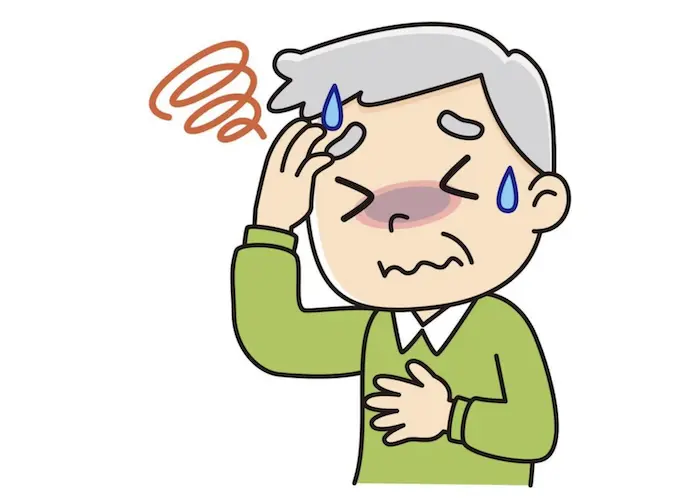Orthostatic hypotension (OH) is a condition characterized by a significant drop in blood pressure when a person transitions from a supine (lying down) to an upright position. This condition can lead to symptoms such as dizziness, lightheadedness, and fainting, significantly impacting an individual’s quality of life. Understanding the gold standard for diagnosing and managing orthostatic hypotension is essential for healthcare providers and patients alike. This article will explore the definition of orthostatic hypotension, its causes, symptoms, diagnostic criteria, gold standard testing methods, and treatment options.
Understanding Orthostatic Hypotension
Definition
Orthostatic hypotension is defined as a decrease in blood pressure that occurs when a person stands up after sitting or lying down. According to the American Autonomic Society and the American Academy of Neurology, orthostatic hypotension is diagnosed when there is a drop in systolic blood pressure of at least 20 mmHg or a drop in diastolic blood pressure of at least 10 mmHg within three minutes of standing.
Symptoms
The symptoms of orthostatic hypotension can vary in intensity and may include:
Dizziness or Lightheadedness: These symptoms often occur when standing up quickly.
Fainting (Syncope): In severe cases, a person may faint due to inadequate blood flow to the brain.
Blurred Vision: Changes in blood pressure can affect vision temporarily.
Weakness or Fatigue: A general feeling of tiredness can accompany orthostatic hypotension.
Nausea: Some individuals may experience gastrointestinal symptoms.
Pharmacological Treatments
In cases where lifestyle modifications are insufficient, pharmacological treatments may be necessary. Commonly prescribed medications include:
Fludrocortisone: This medication helps the body retain sodium and water, increasing blood volume and blood pressure.
Midodrine: Midodrine is a vasopressor that constricts blood vessels, thereby raising blood pressure.
Droxidopa: Approved for the treatment of neurogenic orthostatic hypotension, droxidopa is a prodrug that increases norepinephrine levels, helping to improve blood pressure.
Pyridostigmine: This medication can enhance the autonomic response and improve blood pressure regulation.
Causes
Orthostatic hypotension can result from various factors, including dehydration, medications, autonomic nervous system dysfunction, blood volume loss, and prolonged bed rest. Identifying the underlying cause is crucial for effective management.
The Gold Standard for Diagnosing Orthostatic Hypotension
Clinical Assessment
The first step in diagnosing orthostatic hypotension is a thorough clinical assessment, which includes taking a detailed medical history and conducting a physical examination. The healthcare provider will inquire about symptoms, medications, and any underlying medical conditions.
Blood Pressure Measurements
The gold standard for diagnosing orthostatic hypotension involves measuring blood pressure in different positions—supine, sitting, and standing. The recommended procedure is as follows:
Supine Measurement: The patient lies down for at least five minutes. Blood pressure is measured in this position to establish a baseline.
Sitting Measurement: After the supine measurement, the patient sits up, and blood pressure is measured again after one minute.
Standing Measurement: The patient stands up, and blood pressure is measured immediately and again after one to three minutes.
Diagnostic Criteria
According to the diagnostic criteria set forth by the American Autonomic Society, orthostatic hypotension is confirmed if:
There is a drop in systolic blood pressure of at least 20 mmHg.
There is a drop in diastolic blood pressure of at least 10 mmHg.
The measurements occur within three minutes of standing.
Additional Testing
In some cases, additional tests may be necessary to determine the underlying cause of orthostatic hypotension. These tests may include:
Tilt Table Test: This test involves placing the patient on a table that tilts from a horizontal to a vertical position while monitoring blood pressure and heart rate. It can help assess the body’s response to changes in posture.
Blood Tests: Blood tests may be conducted to evaluate for anemia, electrolyte imbalances, or other underlying conditions.
Electrocardiogram (ECG): An ECG can help identify any arrhythmias or heart conditions that may contribute to orthostatic hypotension.
Management and Treatment of Orthostatic Hypotension
Lifestyle Modifications
Increased Fluid Intake: Encouraging patients to drink more fluids can help increase blood volume and prevent dehydration.
Salt Intake: Increasing dietary salt may help retain fluid and increase blood volume, but this should be done under medical supervision, especially for individuals with hypertension.
Gradual Position Changes: Patients should be advised to change positions slowly, moving from lying down to sitting and then to standing.
Compression Stockings: Wearing compression stockings can help prevent blood from pooling in the legs, improving blood circulation and reducing symptoms.
Physical Activity: Regular exercise can improve cardiovascular health and help the body adapt to changes in posture.
Pharmacological Treatments
In cases where lifestyle modifications are insufficient, pharmacological treatments may be necessary. Commonly prescribed medications include:
Fludrocortisone: This medication helps the body retain sodium and water, increasing blood volume and blood pressure.
Midodrine: Midodrine is a vasopressor that constricts blood vessels, thereby raising blood pressure.
Droxidopa: Approved for the treatment of neurogenic orthostatic hypotension, droxidopa is a prodrug that increases norepinephrine levels, helping to improve blood pressure.
Pyridostigmine: This medication can enhance the autonomic response and improve blood pressure regulation.
Monitoring and Follow-Up
Regular follow-up appointments are crucial for monitoring blood pressure levels and assessing the effectiveness of treatment strategies. Patients should be educated about recognizing symptoms of orthostatic hypotension and when to seek medical attention.
Conclusion
Orthostatic hypotension is a common yet often underdiagnosed condition that can significantly affect an individual’s quality of life. The gold standard for diagnosing orthostatic hypotension involves a thorough clinical assessment and blood pressure measurements in various positions. Identifying the underlying cause is essential for effective management, which may include lifestyle modifications, pharmacological treatments, and regular monitoring.
Orthostatic hypotension (OH) is a condition characterized by a significant drop in blood pressure when a person transitions from a supine (lying down) to an upright position. This condition can lead to symptoms such as dizziness, lightheadedness, and fainting, significantly impacting an individual’s quality of life. Understanding the gold standard for diagnosing and managing orthostatic hypotension is essential for healthcare providers and patients alike. This article will explore the definition of orthostatic hypotension, its causes, symptoms, diagnostic criteria, gold standard testing methods, and treatment options.
Related Topics:


